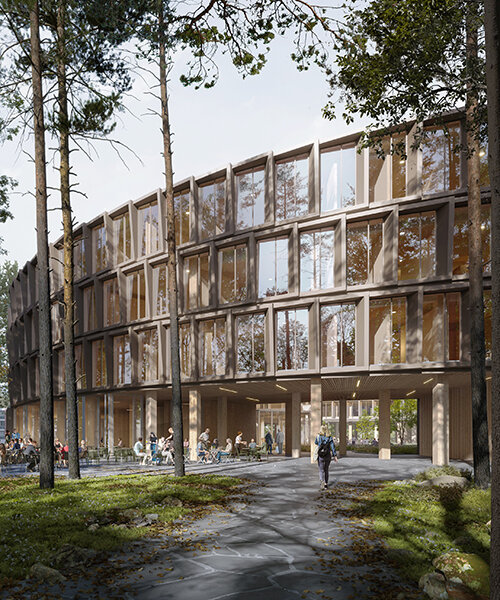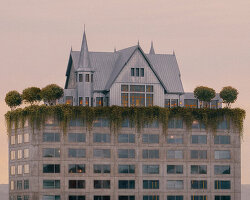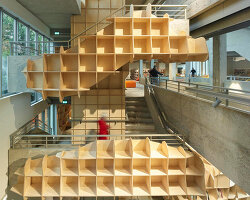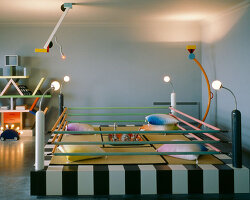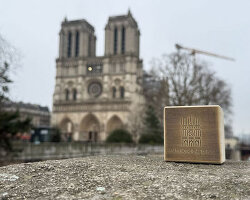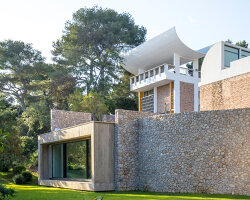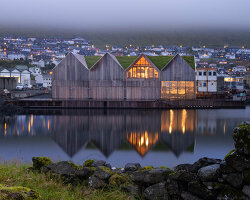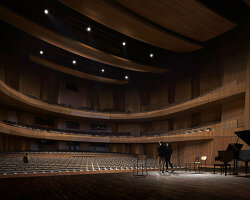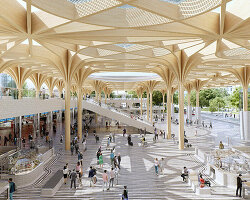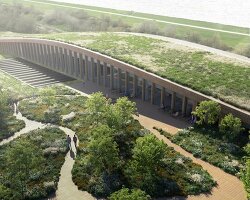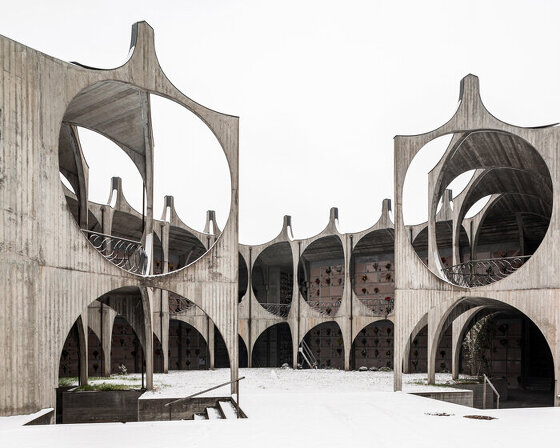Henning Larsen’s CERN B777 in France
The B777 in France by Henning Larsen is the winner of an international design competition tailored specifically for CERN’s Prévessin Campus. Nestled along the forest’s edge on the French side of the France-Switzerland border, the circular structure integrates with its surroundings, marrying nature and innovation. Designed to foster community and collaboration, the B777 building features biogenic materials and a low-carbon footprint. Its circular layout, with a central courtyard sheltered by the building, connects the interior with the surrounding forest, park, and plaza. Within its timber walls, offices, laboratories, and workshops coexist, maintaining a constant link to nature. ‘Our vision is to craft a dynamic workspace at the heart of nature—a place where wellbeing, collaboration, and knowledge thrive. It’s not just an ordinary office; the circular design serves as a symbolic marker, creating a new cultural center for the entire campus in a formerly rigid, orthogonal, research park,’ says Søren Øllgaard, Partner and Design Director, Henning Larsen.
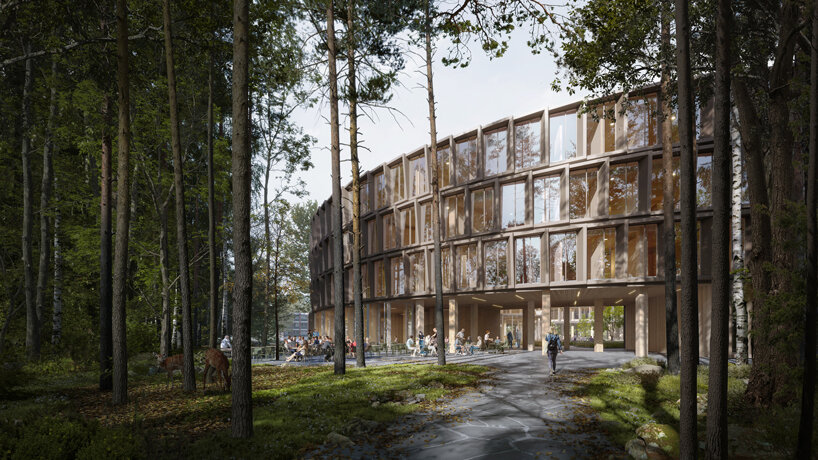
renders by Vivid Vision
Design Philosophy Behind B777 at CERN’s Prévessin Campus
Echoing CERN’s philosophy of scientific unity, the design emphasizes interconnectedness and openness. A spacious public atrium spans four stories, serving as a hub for informal gatherings and knowledge exchange. Flexible floor plans and dedicated community zones further promote interaction, complemented by outdoor spaces and lounge areas. Henning Larsen’s vision for B777 encapsulates CERN’s legacy of collaborative discovery, providing a space where scientists and guests can engage with nature and each other in pursuit of knowledge. ”Infranature,’ as we term it, encapsulates our approach to blending the infrastructural needs of the scientific research campus with the intrinsic benefits of working near to nature, resonating with the rural and natural qualities of our ‘nature’ campus identity,’ says Mikkel Eskildsen, Associate Design Director, Henning Larsen (see more here).
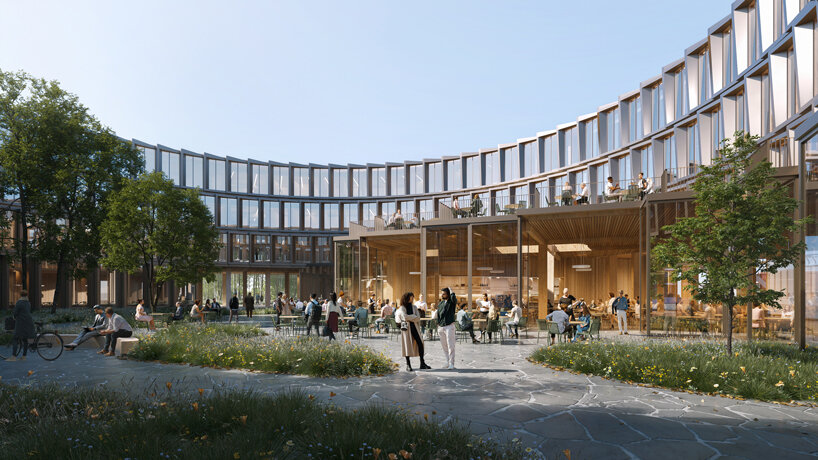
the circular design, with a sheltered courtyard at its heart, connects forest, park, and plaza
Blending Indoor and Outdoor Spaces
Taking its cues from the cozy plazas found in Alpine villages, the central courtyard of the building is designed to extend outdoor enjoyment throughout the year. It remains open and inviting, serving as a social focal point and seamlessly connecting indoor and outdoor spaces. From lab areas to informal meeting spots, occupants can enjoy views of lush greenery. This central hub also provides access to the restaurant, which offers outdoor seating and a kitchen garden filled with aromatic plants. Whether it’s providing shade in the summer, welcoming sunlight in the winter, or sheltering from the rain, the courtyard adapts to the weather, ensuring comfort year-round. 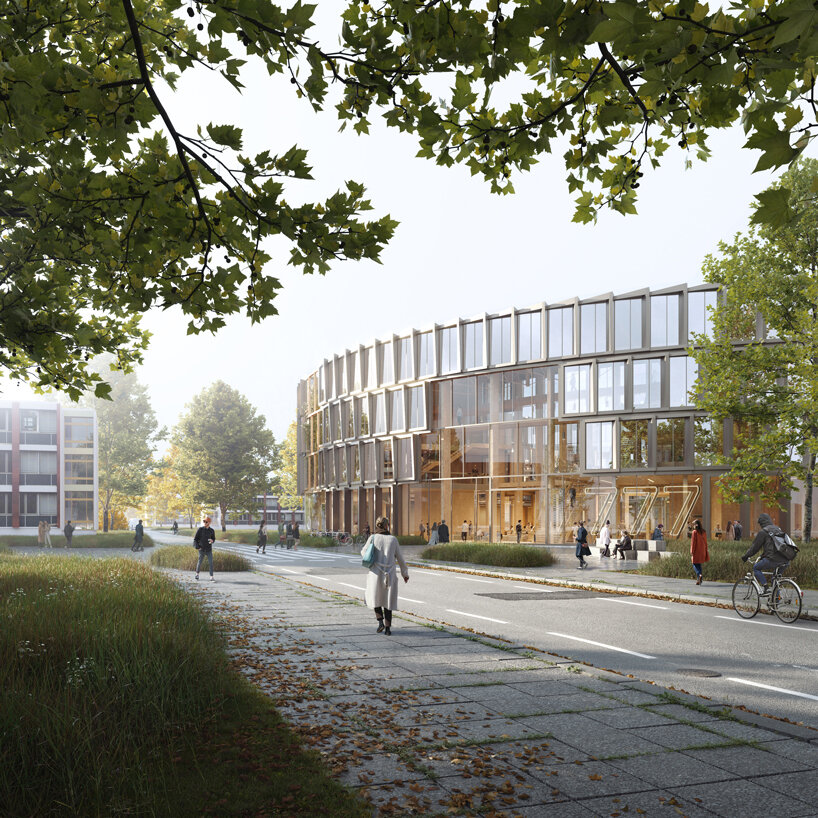
To enhance biodiversity, the building integrates with the surrounding landscape, creating a corridor for various forms of life to flourish. Additionally, planned pathways and routes around the campus encourage people to engage with nature. The surrounding urban landscape features pockets of wild grass inspired by the Jura mountains, along with amenities like bike paths, parking, and charging stations, promoting sustainable transportation options. ‘As you navigate through the forest, you encounter a clearing, bathed in natural light filtering through the canopy above,’ says Sonja Stockmarr, Global Design Director, Landscape, Henning Larsen. ‘As the native biodiversity thrives and evolves with the seasons, so does the building and its inhabitants. This serene environment sets the stage for a unique working experience, where the possibility of activity in nature enhances productivity and well-being.’

‘An inspiring landmark for future development’
The design of B777 prioritizes the reduction of embodied and operational carbon by assessing its environmental impact through life-cycle assessments. Structural materials are chosen with the potential for reuse and recycling in mind, utilizing simple, demountable, and mechanical connections to facilitate disassembly. The building’s three-dimensional facade is optimized to maximize natural daylight and views while also providing self-shading to reduce solar radiation, thereby lowering energy consumption for cooling purposes. Through collaborative efforts and a focus on data-driven design principles, every decision regarding material consumption is carefully considered to ensure the building’s sustainability. B777 stands as an inspiring landmark for future development, reflecting a holistic approach to environmental responsibility and innovation.
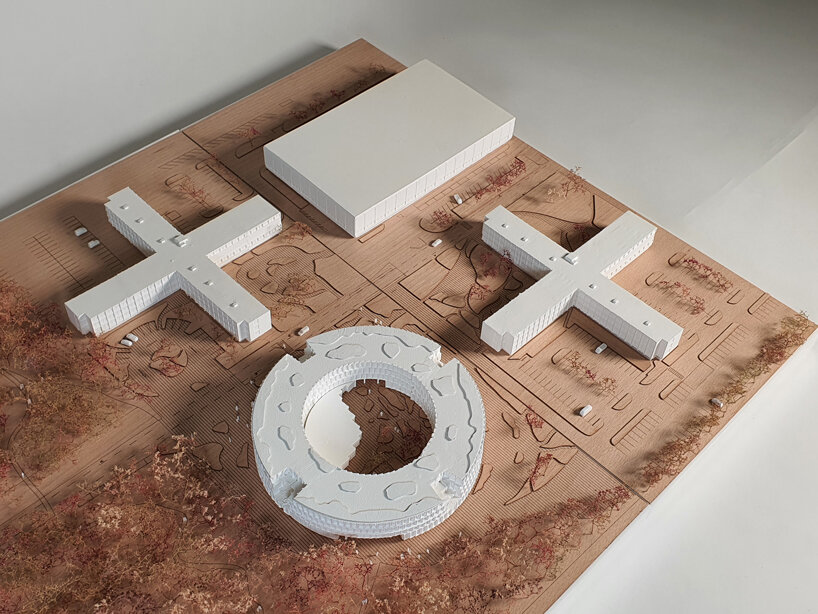
project info:
name: CERN B777
architect: Henning Larsen | @henninglarsenarchitects
local architect: Brière Architectes | @brierearchitectes.com
engineers: Ramboll, Artelia Group
location: Prévessin-Moëns, France
expected completion date: 2027
size: 13,000 sq ft (1207.7 sqm)
client: CERN
renders: Vivid Vision | @seevividly
